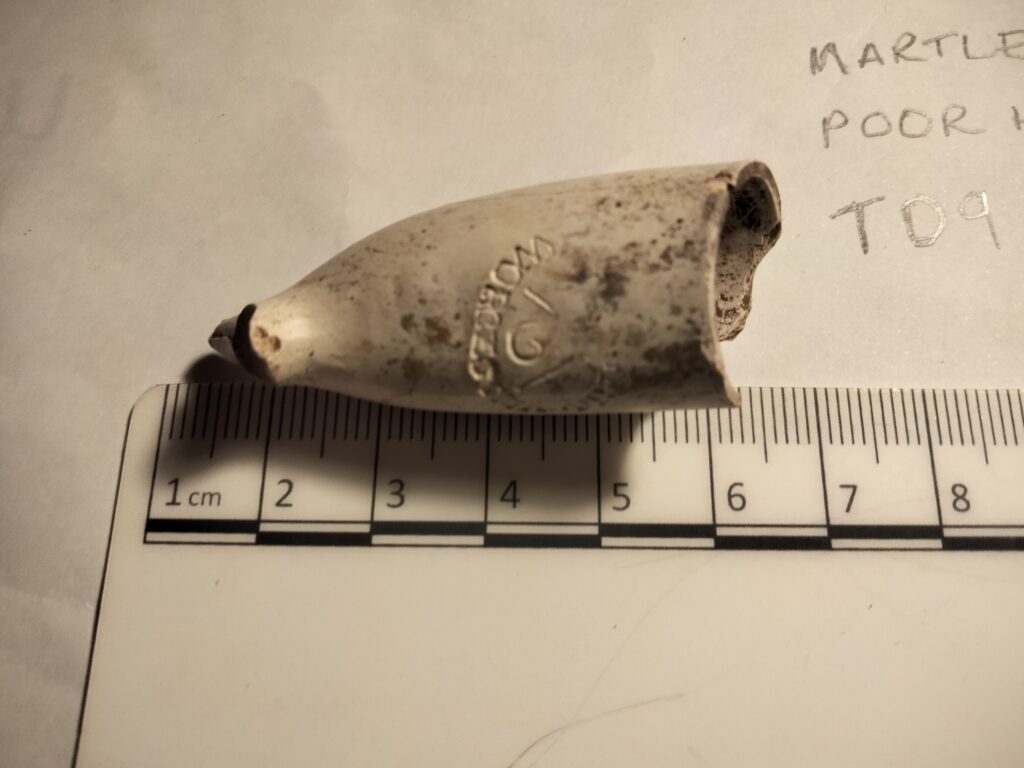In our quest to find Martley’s 17th-century Poor House, the NWAG team have been excavating at Millennium Green, searching for floors or any other building remains. An old tithe map of 1843 shows the Poor House still standing, running parallel to the church and on the opposite side of the lane from St Peter’s church in Martley. This area became our main focus, and was subjected to a geophysical survey by our member, Chris. The survey revealed some interesting anomalies at the east of the site, which helped us site Trenches 4 and 7.

All of the trenches sited in this north-eastern part of the field had similar contents, containing up to 4 or 5 different contexts (layers with or without finds), the latest of which was yellowish clay. Trench 3 was a bit different, and produced a large deposit of 18th- to 20th-century pottery, a clay pipe bowl dated c.1650-1680, numerous animal bones, and CBM (ceramic building material). The trench contained a fair amount of charcoal, which suggests that this was once an area of burning.

On the last day of the dig we found another pipe bowl. This was stamped with a drafting compass and the word “Worcester”. Local archaeologist Roger Moore has shown that pipes of this type were made at John Russell’s manufactory in Cripplegate, Worcester, during the period 1820-1845. We’ve published a similar find from Astley, and we suspect that others might turn up in excavations to come!
A few much older artefacts were also found. They included three very worn pieces of pottery from Trenches 1, 4, and 6 that might date back to Roman times, as well as a fragment of thick, patterned floor tile that could be medieval! Trench 4 proved a bit of a surprise because it contained a huge lump of worked mudstone. This led us to speculate whether it was a reject from some former repairs to the nearby church.
Unfortunately we’ve not managed to find any floors or wall foundations, so haven’t yet established the Poor House’s exact shape or location. We think that our our trenches were probably sited on midden spread or made ground, which would have raised the ground level and prevented this end of the site from getting too waterlogged. In any case, we have enjoyed our time at this site, and are grateful to have been given the opportunity to explore this public area.
